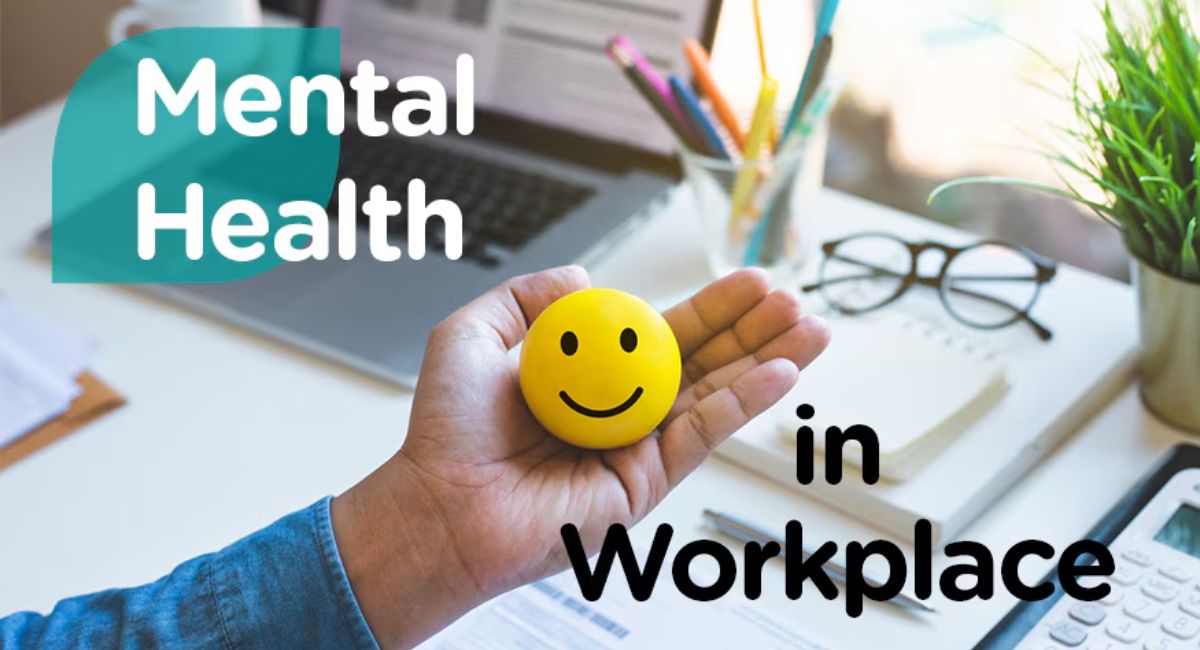Introduction
Let us face the truth: Work takes a huge chunk of our lives. That makes it evident that if the workplace is not mentally healthy, then it is bound to have profound effects on us. Mental health at work is not just another word doing the rounds; it is an absolute necessity.WHO states that depression and anxiety cost the global economy $1 trillion each year in lost productivity. Quite staggering, I should say; and hopefully, that serves as a great wake-up call.
Being Aware of Workplace Mental Health
Defining and Scope
Workplace mental health signifies the emotional, psychological, and social well-being of employees in a working environment. It pertains to how employees handle stress, relate with others, and do their work.
. It is not enough to focus on mental health issues; workplace designs should encourage mental wellness.
This includes problems such as anxiety and/or depression, burnout, and chronic stress, which by no means exhaust the list of problems employees have to face. Employees fight more than just deadlines for these problems. A lot of people suffer in silence, as they couldn’t demonstrate such stigmas and judgments. Others do not even realize that they are struggling until it significantly impacts their life or job.
There are many causes of mental health problems at work.

Burnout and Workload.
When there is more work, less time, and space for breathing, then that counts for burnout; longer hours, impossible expectations, and ongoing pressure just drain people.
Work-life imbalanced.
Checking your emails while sitting with midnight candles on; skipping dinner to join a Zoom supper-it is now your work-life balance treading dangerously. The boundary gaffles between what is work and life put a tax on mental reserves.
Toxic Workplace Culture:
Talk, preferential treatment, bullying, or any such lack of trust all contribute to an environment that poisons mental well-being. Morale dies faster in a toxic culture than in a piled workload.
Poor Management and Communication: Bad bosses annoy people; they ruin them. Lack of clear communication and feedback as well as absence of supportive management will stress someone out and make them even less satisfied with their jobs.
Symptoms of Mental Disorders at Work
Behavioral Cues
Frequent repeated tardiness, bursts of sudden anger, or an introverted competitiveness could all be signs of distress.
Physical & Emotional Symptoms
Headaches, fatigue, irritability, and low energy are all good red flags. People usually brush them aside; these are classical symptoms of underlying problems.
Reduced Productivity
When a person is going through a phase of consistently poor performance and disengagement, their mental health could be the culprit.
The Organization-Focused Perspective of Mental Health
Lower Employee Engagement
Disengaged employees are unhappy employees. They will do the bare minimum, and their apathy undermines team cooperation.
High Attrition
Employees don’t leave jobs—they leave toxic workplaces. Poor mental health support programs lead to high employee turnover.
Absenteeism
Often disguised as sick leaves, missed deadlines, or unplanned absences due to mental health reasons.
Financial Ramification
Lost productivity, hiring replacements, and low morale? All of it adds up. Bad support for mental health has a big price tag attached—an enormous one.
Creating a Mentally Healthy Workplace
Leadership’s Role in the Promotion of Mental Health
Mentally healthy workplaces begin at the top. Leaders must lead by example—talk about mental health, take mental health days, and foster an anonymous environment.
Establishing a Supportive Culture
Asking for help should be normalized. Vulnerabilities, rather than just victories, should always be celebrated. A body of speech is the enclosure of brutal, affectionate folk. Consider
Flexibility and Work-Life Balance
Flexible hours, remote options, or a 4-day workweek can help lift morale and offer some alleviation from stress.
Mental Health Programs and Policies
Employee Assistance Programs
These are confidential services that help employees solve personal problems or work-related problems. These should be offered in every workplace—no exceptions.
Mental Health Days and Leave Policies
Let’s normalize taking a day off just to recharge mentally; after all, it is just as important as recovering from the flu.
Training and Awareness Campaigns
Train managers and employees to recognize signs and symptoms of mental health conditions and to respond accordingly. Awareness is the first step to change.
Creating the Conversation About Employee Mental Well-Being
Regular Check-Ins and Open Communication
Don’t wait for quarterly reviews. Regular, honest check-ins show employees you care.
Encourage Breaks and Downtime
Breaks are not a luxury: they are necessary. Encourage walks, lunches, or even power naps.
Provide Mental Health Resources
From counseling services to mindfulness apps, give employees the tools they need to manage their mental wellness.
Work From Anywhere- Mental Health

Advantages and Disadvantages of Working Remotely
Distancing at work offers flexibility, whereas at times it would increase alienation and fuzziness.
Best Practices to Offer Virtual Team Support
Keep the lines of communication open. Use video calls for FaceTime. Celebrate social gatherings with remote work.
Legal and Ethical Environments
Workplace Accommodations
Legally, in many countries, employers are forced to accommodate certain mental health needs just as those concerning physical setups.
Confidentiality and Respect
Mental health must be treated confidentially. Trust is the foundation of support.
Mental Health and Diversity, Equity, and Inclusion (DEI)
Meeting Unique Challenges for Marginalized Groups
Racism, gender bias, and discrimination add an extra layer of stress for marginalized employees. Mental health support must be inclusive.
Inclusive Aid Provisions
The resources must reflect the diverse needs of different generations, cultures, and ability levels- your bilingual programs are just one example.
Notable Examples of Companies Implementing Programs Successfully
Case Study 1: Google
On-campus counselors, stress management classes, and extended mental health leave. As a result, employees tend to feel happiness along with an increase in morale.
Case Study 2: Deloitte
Deloitte’s Mental Health Champions program trainings employees to support each other in the tackling of any kind of stigma hindering a transparent approach.
Self-Care Tips for Employees on Wellness at the Workplace
- Take time for breaks.
- Set boundaries with work.
- Be mindful
- Find someone to confide in
- Eat well and get plenty of sleep.
When and How to Seek Help
If work somehow disrupts your sleep, relationships, or health, it is about time you contacted the human resources or a mental health professional.
The Future of Mental Health in the Workplace

Trends and Innovations
Innovations such as AI-based therapy bots and four-day workweeks are transforming mental wellness support.
Preventive Is Where We Need to Go
It is no longer about waiting and then breaking down. The future of mental health programs is preventive, which benefits everyone.
Conclusion
Mental health at the workplace is not a “nice to have,” but an absolute “must.” Strong-minded employees benefit all: productivity increases, engagement rises, and businesses prosper. It is time we normalize the conversation, support and build caring workplaces.
FAQs
What is workplace mental health?
It refers to all the feelings and emotions of an employee at work, like stress and mood changes and mental health.
How could I know if the exposure to several tension factors at work is having an impact on me?
You may observe some symptoms, as mentioned above: anxiety, irritability, emotional exhaustion, and loss of interest in your job.
. When work becomes a battle within you, that is when you should start thinking about it.
How can the employer be supportive of mental health?
Through cultivating awareness, assuring well-being, establishing mental health resources, and creating policies that promote work-life balance, including flexi-hours and check-in days.
Is mental health protected by law within the workplace?
Yes. Many countries have laws that include mental health equal with physical health; thus it has laws against discrimination and laws protecting rights to accommodations.
Is a remote job a compromise on mental health?
Though allowing flexibility, remote work may lead to isolation or burnout, but it’s probably going to do much good to mental health if supported and structured.

